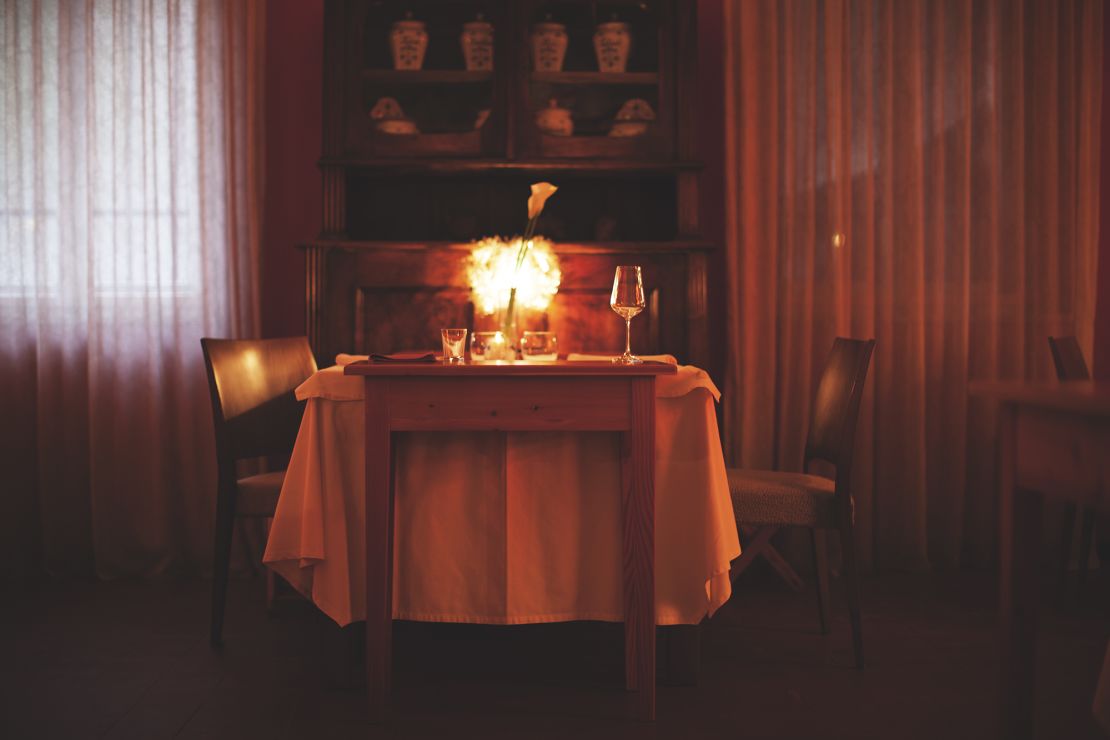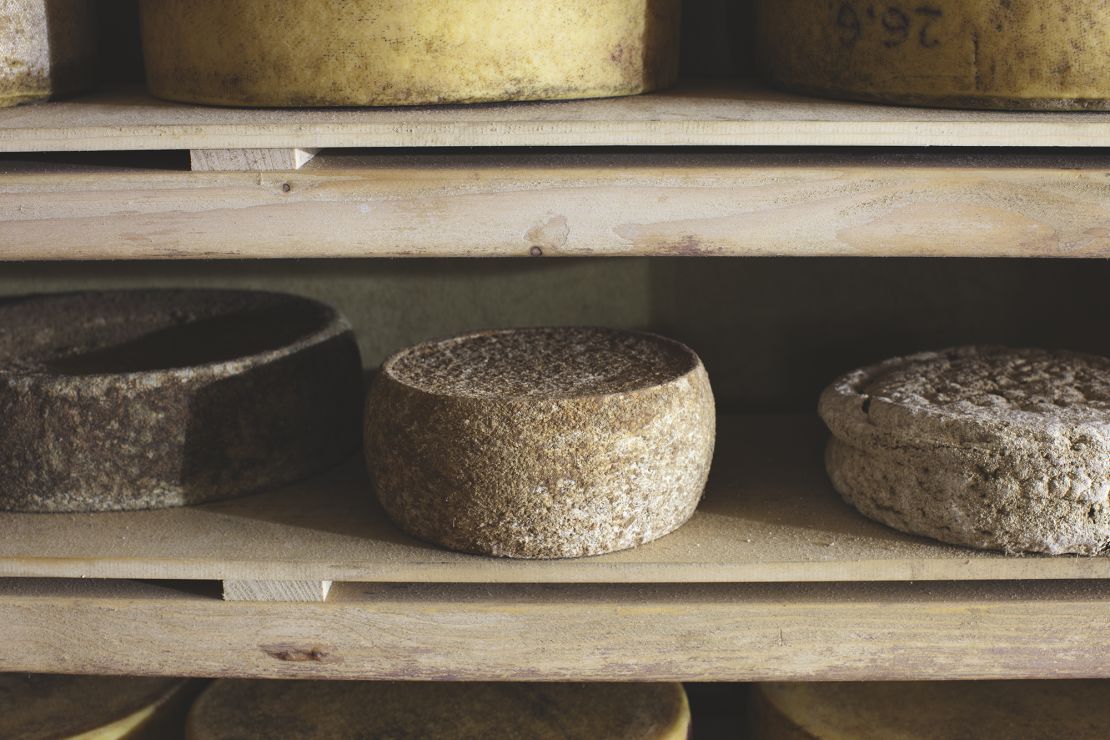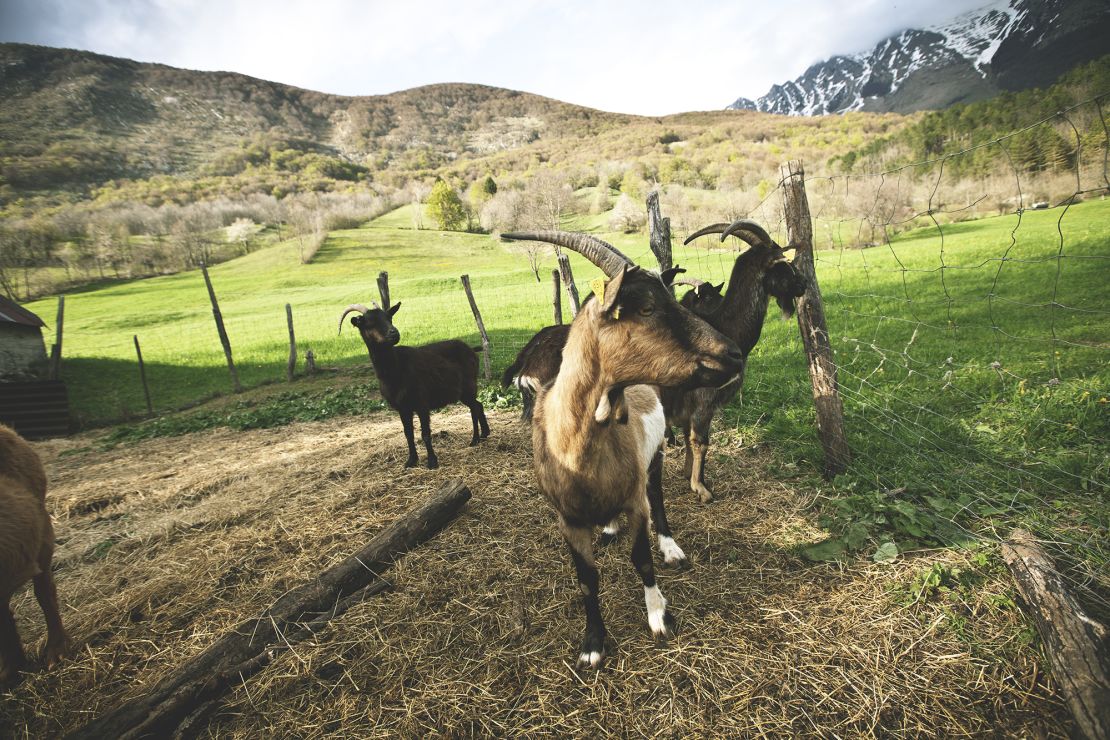Five years ago, few people would have put trying Slovenian food on their bucket list.
Nestled between Italy, Austria, Hungary and Croatia, the tiny country of two million people which takes just three hours to drive across, wasn’t on the culinary map.
But one female chef has thrust the Central European nation into the global limelight with her visionary gastronomy.
Last year, chef Ana Roš appeared on Netflix series Chef’s Table and, in January, she was crowned “The World’s Best Female Chef 2017” by The World’s 50 Best Restaurants.

“Voters (were) seduced by the stunning location, the charm of the restaurant and its service, but most of all by the originality, subtlety and sophistication of the food,” William Drew, group editor of The World’s 50 Best Restaurants, tells CNN.
“She has almost single-handedly drawn attention to her region, its agro-economy, wine, culture and sheer beauty.”
With the Michelin Guide not yet in Slovenia, it was the highest culinary accolade Roš could bring to her nation.
Who is Ana Roš?
A self-taught chef, Roš helms Hiša Franko (meaning Frank’s House) inn and restaurant in an Alpine corner of the Soca Valley, just a few miles from the Italian border.
Her menu has been praised for its eclectic, original interpretations of Slovenian cuisine – traditionally, a melting pot of influences from neighbors such as Italy and Austria.
For the past 15 years, the 44-year-old has worked to elevate her country as a gastronomic destination.
Her achievements are all the more remarkable considering the male-dominated profession she is working in: while there are 125 male chefs with three Michelin stars, just five women have held the same accolade (they are all in Europe).
Furthermore, women in top kitchen positions tend to earn 28% less than men, a Glassdoor report claimed last year.
But perhaps Roš has an advantage.

When it comes to gender equality, Slovenia is the highest ranked country in the EU and 8th best in the world, according to the World Economic Forum’s Global Gender Gap Report 2016.
Not that that has safeguarded Roš against sexism in the kitchen. Last year, she says she fired five male chefs in a week after they questioned her authority.
“They did not pay enough respect. You can feel it, especially when you try to balance the energies of a completely new team,” Roš tells CNN.
“Their eyes tell you everything, there’s no need for words.”
A diplomatic dilemma
Roš was raised in an ambitious family.
More from "Her"
Born to a doctor father and journalist mother, she was an excellent student and as a youth was on the national ski team. Fluent infive languages – Slovenian, Spanish, English, French, and Italian – she went on to pursue international diplomatic studies at university.
Roš was a plane ride away from starting a job as a junior diplomat in Brussels when fate intervened.
The parents of her boyfriend, Valter Kramar, were retiring, and as the eldest son, he had inherited their restaurant, Hiša Franko, in the tiny town of Kobarid just down the road from where Roš had grown up, in Tolmin.
He gave her a life-altering dilemma: follow her heart back to the little valley with him, or continue on her glittering diplomatic career path.
A family affair
Roš chose love, but it came with a price tag.
“(My family) didn’t want me to come back and be a cook and were ashamed that I was working with my hands. They expected more from me.”
Her father shunned her for six months. Her mother, she says, is still “embarrassed.”
In Slovenia and across Communist countries … a cook is (seen as) someone who can’t do anything else,” she explains.
“The funny thing is that I am kind of an ambassador, anyway, bringing curious travelers and diners to experience Slovenia.”
Diners come from as far as New Zealand, Australia and the US to her restaurant, which is also a favorite with Slovenian politicians and personalities – even president Borut Pahor has payed a visit.
Small town, big ideas
When Roš and Kramar took over Hiša Franko in 2000, it already had a full-time chef.
Kramar, a sommelier, looked after the wine while Roš manned the front of the house.
She thought the restaurant held huge possibilities and wanted to see the menu evolve beyond traditional Slovenian dishes of ravioli and cottage cheese.
“We had been traveling the world and saw that things were moving outside this valley,” she recalls. “So I went very ambitiously to the kitchen, talking with the chef, and saying we should try to pair the pasta with some local cheese, or introduce some wine pairings. But he didn’t really see the value in it.”

The existing kitchen team eventually quit, leaving Roš to take the reigns.
“That first time I opened the door of the kitchen, I closed it again. Then I leaned back on it and thought, ‘Now what do I do?’”
At 30 years old and three-months pregnant, she had embarked on a new career: head chef of Hiša Franko.
“From then on, I was eating in the kitchen, breastfeeding in the kitchen – everything was about the kitchen.”
Precision is everything
The early years were full of fumbles. Without any formal training, she couldn’t get raviolis to stay closed or bread to rise.
“I kept asking so many questions. I always say that questioning yourself and doubting the quality of your result is the engine of progress.”
Without any financial partners, her family’s business was riding on her performance.
Roš soaked up pointers from her mother-in-law and a family friend,who used to helm a restaurant in the capital of Ljubljana before transitioning into academia.
“I was really like a sponge at the time, so thirsty for the knowledge,” she recalls.
After just two years, she was producing innovative dishes of a world-class standard and, in 2010, an article in Italian magazine “Identità Golose” brought her Europe-wide attention.
Seeing stars
It wasn’t until 2012 that Roš really caught the eye of the global culinary community.
It started with an invitation to join the elite Cook it Raw eco-friendly chef community, which led to talks at conferences, master classes, pop-ups and several appearances on French-German television program “Happiness on the Plate”.
Then in 2014, Roš made a guest chef appearance at Ikarus restaurant inside Red Bull’s Hangar-7 – a pop-up eatery at Salzburg Airport, in Austria, known for inviting top chefs.

International invitations subsequently took Roš to places such as New York, where she joined the “Gelinaz ‘Grand Shuffle,” an event where 37 international chefs swapped restaurants.
But her biggest break came in 2016, when Roš was profiled on Netflix’s “Chef’s Table.”
After the episode aired, visits to Hiša Franko’s website jumped from 200 to 10,000 a day.
However, Roš says Hiša Franko’s success will likely stop short of a Michelin star.
“There are some candidates that deserve 1 or even 2 stars in Slovenia, but if Slovenia as a country remains so passive regarding gastronomy, as it has been up to now, all expectations regarding important guides coming to Slovenia will remain a dream.”
Inside Ana’s kitchen
Slovenia has 24 gastronomic regions.
In the northwestern valley, for example, mutton dumplings and cottage cheese ravioli are common rural dinners.
But Roš isn’t interested in regurgitating the classics, nor does she subscribe to conventions like a “signature dish”.
“I simply can’t cook a dish I did two years ago, because I am a different person. My cooking style changes, because I am changing,” she says.
Ranging from $75 for five dishes and $95 for nine, everything on Roš’s tasting menu is an invention, made from ingredients sourced within walking distance of the inn.
A peek into Chef Ana Roš' kitchen
She dubs it a “zero kilometer” approach, working with mushroom foragers, cheesemongers, berry growers, and fishermen in the surrounding Alpine landscape.
“We have the Alps, Mediterranean and the lowlands – some of the most beautiful and unique ingredients come from my backyard,” says Roš.
The only recurring elements in her menu are the homemade butter and sourdough bread, borrowed from a 300-year-old recipe. Villagers living in the mountains once used apples from nearby orchards to start the fermented culture used to make bread, resulting in a unique flavor.
“When I gave it to my mother in law, she said it tasted like what she ate as a kid in a village in the mountains,” says Roš. “People 150 years ago were also thinking local, so it comes full circle.”
Serving up new rules
When asked about her title as the World’s Best Female Chef, Roš points out that she’s not just a chef – she’s also a mother and a partner (Kramar and Roš have never wed).
In rural Slovenia, women are expected to subscribe to traditional roles. So even though Roš works 18 hours in the kitchen, she’s also expected to be a full-time mother to her children – Svit, 14, and Eva Clara, 12.

To spend more time together, the family closes the restaurant for two months a year.They often travel the world, finding inspiration, for example, in Vietnamese street food and taking notes from creative chefs in Australia, Paris and Barcelona.
While Roš has worked with several talented female sous chefs, she says she rarely sees them ascend to helm their own kitchens.
Being a chef requires significant physical strength – being able to de-bone an entire lab or filet a fish in a few minutes isn’t easy – and few can keep up with the long days.
“You can be talented, but the talent may be 30% of the success. It all comes back to motivation,” she says.
“I could have failed as a chef and failed as a parent. But I was highly motivated in both.”















